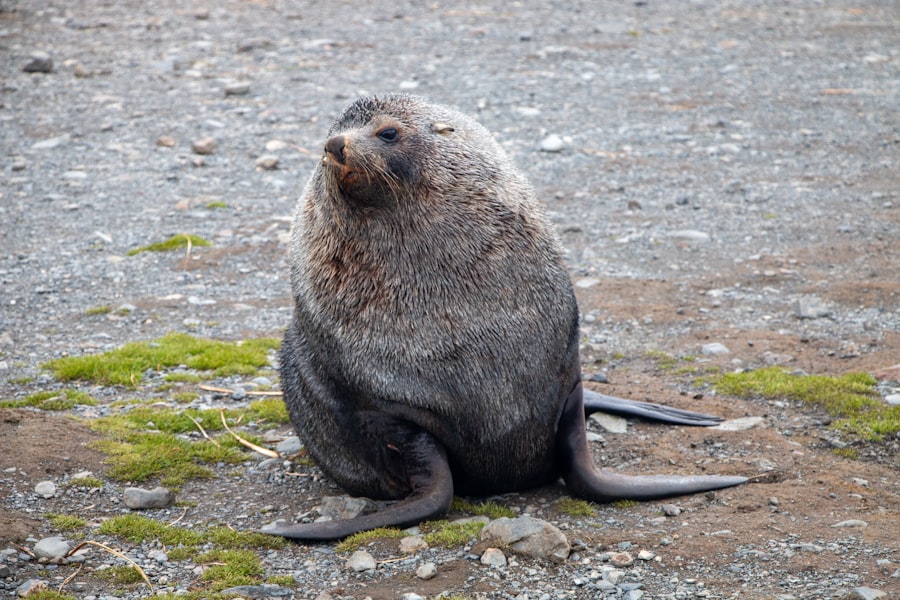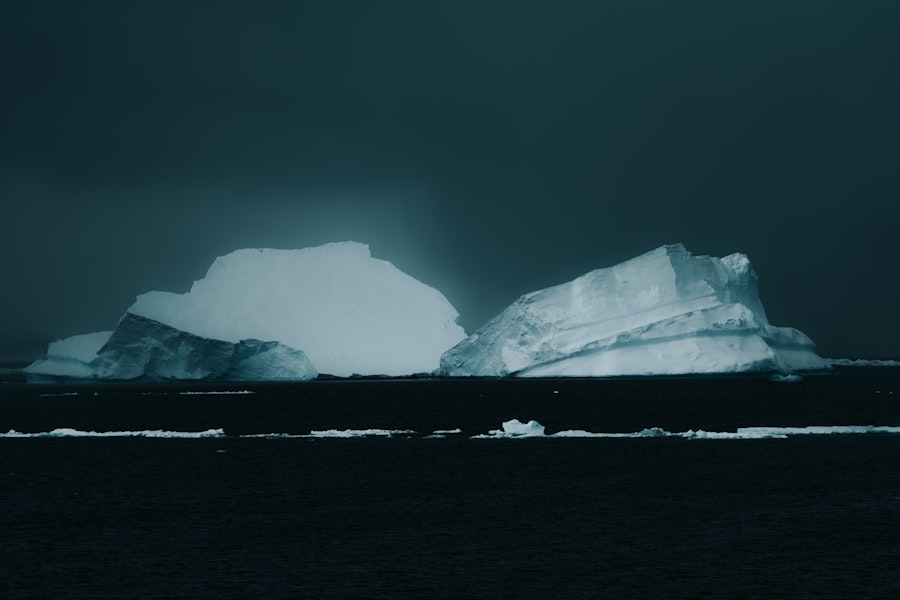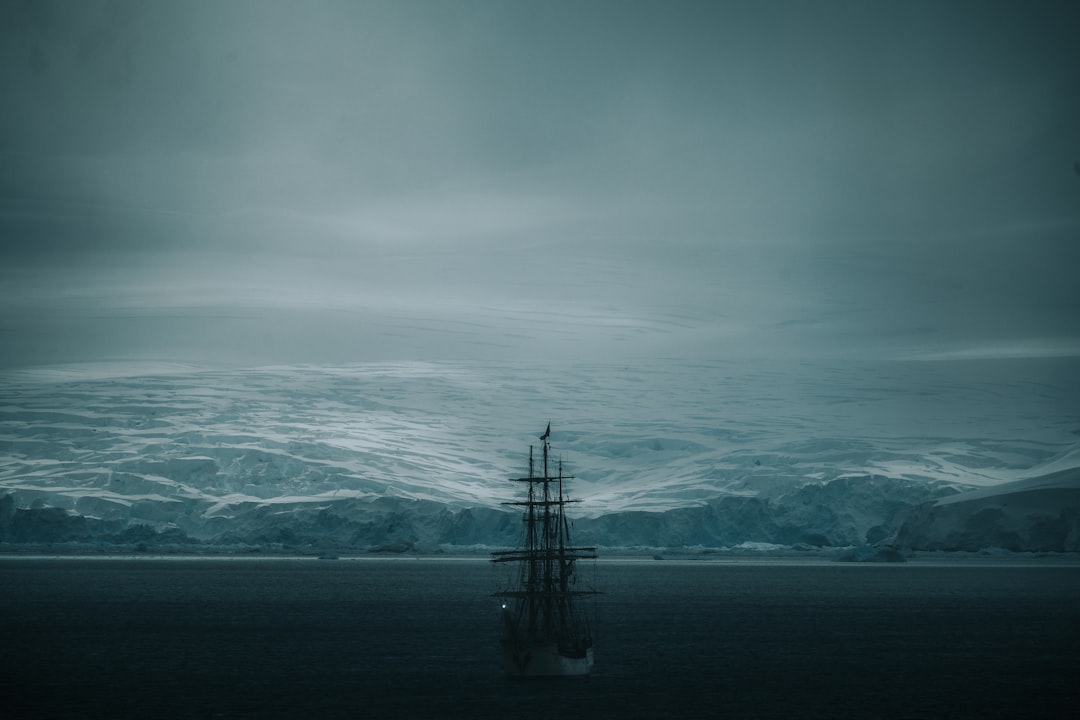The Drake Passage is a body of water located between the southern tip of South America and Antarctica, serving as a crucial maritime corridor for vessels navigating to and from the Antarctic region. Named after the English explorer Sir Francis Drake, who was one of the first to sail through these treacherous waters in the late 16th century, the passage is renowned for its challenging conditions. Stretching approximately 800 kilometers (500 miles) wide, it connects the Atlantic and Pacific Oceans, making it a vital route for maritime traffic, particularly for research expeditions and tourism to Antarctica.
Characterized by its unpredictable weather and turbulent seas, the Drake Passage is often referred to as one of the roughest stretches of ocean in the world. The confluence of cold Antarctic waters and warmer currents from the north creates a unique environment that can lead to sudden storms and high waves. This unpredictability has made the passage both a formidable challenge for sailors and an awe-inspiring spectacle for those who dare to traverse it.
Despite its reputation, the Drake Passage remains a gateway to one of the most pristine and remote regions on Earth, drawing adventurers and researchers alike.
Key Takeaways
- The Drake Passage is a body of water between South America’s Cape Horn and the South Shetland Islands of Antarctica.
- The Drake Passage is significant in Antarctic exploration due to its challenging weather and sea conditions, making it a rite of passage for those traveling to the continent.
- When choosing an Antarctica cruise for your Drake Passage experience, consider factors such as ship size, itinerary, and level of comfort.
- Wildlife encounters in the Drake Passage include sightings of whales, seals, and various seabird species.
- Weather and sea conditions in the Drake Passage can be unpredictable, with strong winds and rough seas being common, so it’s important to be prepared for potential motion sickness.
The significance of the Drake Passage in Antarctic exploration
The Drake Passage holds immense significance in the history of Antarctic exploration. It has served as a critical route for explorers, scientists, and adventurers seeking to uncover the mysteries of the southern continent. The passage was first navigated by explorers in the early 19th century, paving the way for subsequent expeditions that would lead to significant discoveries about Antarctica’s geography, wildlife, and climate.
The challenges posed by the Drake Passage have often tested the mettle of those who venture through it, making successful crossings a badge of honor among explorers. Moreover, the Drake Passage has played a pivotal role in scientific research. The waters are rich in nutrients and support diverse marine life, making them an ideal location for studying oceanography and marine biology.
Researchers have utilized the passage as a natural laboratory to investigate climate change, ocean currents, and their effects on global weather patterns. The significance of the Drake Passage extends beyond its physical geography; it represents a bridge between human curiosity and the vast, uncharted territories of Antarctica.
Choosing the right Antarctica cruise for your Drake Passage experience

Selecting the right cruise for traversing the Drake Passage is essential for ensuring a memorable and enjoyable experience. With numerous operators offering various itineraries, travelers must consider factors such as duration, onboard amenities, and expedition activities. Some cruises focus on luxury experiences with comfortable accommodations and gourmet dining, while others prioritize adventure and exploration, providing opportunities for kayaking, camping, and wildlife watching.
Travelers should also take into account their personal preferences and physical capabilities when choosing a cruise. Some itineraries may include longer crossings or more challenging excursions that require a higher level of fitness. Additionally, it is crucial to research the reputation of cruise operators regarding safety measures and environmental practices.
Wildlife encounters in the Drake Passage
| Year | Number of Wildlife Encounters | Most Common Species |
|---|---|---|
| 2018 | 120 | Humpback Whales |
| 2019 | 150 | Antarctic Penguins |
| 2020 | 130 | Albatross |
The Drake Passage is not only a vital maritime route but also a thriving ecosystem teeming with diverse wildlife. As travelers embark on their journey through these waters, they are often treated to spectacular sightings of marine life. The passage serves as a migratory route for various species of whales, including humpback, minke, and orca whales.
Observing these majestic creatures breaching the surface or swimming alongside the vessel can be a highlight of any cruise. In addition to whales, seabirds are abundant in the Drake Passage. Species such as albatrosses, petrels, and skuas can often be seen soaring gracefully above the waves.
The sight of these birds gliding effortlessly on ocean breezes adds to the sense of wonder experienced during a crossing. For many travelers, these wildlife encounters are not just moments of beauty; they serve as reminders of the delicate balance of life in this remote part of the world and underscore the importance of conservation efforts in protecting these species.
Weather and sea conditions in the Drake Passage
The weather and sea conditions in the Drake Passage are notoriously unpredictable, contributing to its reputation as one of the most challenging maritime routes. Travelers should be prepared for rapidly changing weather patterns that can shift from calm seas to turbulent waves within a matter of hours. The passage is influenced by various factors, including wind patterns and ocean currents, which can create rough seas that are daunting even for experienced sailors.
Understanding these conditions is crucial for anyone planning to cross the Drake Passage. While some days may offer smooth sailing with clear skies, others can present formidable challenges with high winds and swells reaching several meters. Cruise operators typically monitor weather forecasts closely to ensure passenger safety and comfort during crossings.
Travelers are encouraged to remain flexible with their plans and be prepared for any eventuality when navigating this dynamic body of water.
Historical and cultural highlights of the Drake Passage

The historical significance of the Drake Passage extends beyond its role in exploration; it is also steeped in cultural narratives that reflect humanity’s relationship with nature. The passage has been a site of numerous maritime adventures and misadventures throughout history. From early explorers like Sir Francis Drake to modern-day adventurers, each journey has contributed to our understanding of this remote region.
Culturally, the Drake Passage has inspired countless stories, legends, and artistic expressions. It has been depicted in literature, film, and art as a symbol of adventure and discovery. The tales of shipwrecks and heroic rescues have become part of maritime folklore, capturing the imagination of those who dream of exploring distant horizons.
This rich tapestry of history adds depth to any journey through the passage, allowing travelers to connect with the legacy of those who have come before them.
Activities and excursions during a Drake Passage crossing
A crossing of the Drake Passage offers more than just breathtaking views; it presents numerous opportunities for engaging activities and excursions that enhance the overall experience. Many cruise operators provide onboard lectures led by experts in various fields such as marine biology, geology, and history. These educational sessions allow travelers to gain insights into the unique environment they are traversing.
In addition to lectures, many cruises offer excursions such as zodiac boat tours that allow passengers to explore icebergs and coastal areas up close. Kayaking is another popular activity that provides an intimate experience with nature while paddling through pristine waters surrounded by stunning landscapes. For those seeking adventure, some itineraries may include camping onshore or guided hikes on Antarctic islands.
These activities not only enrich the journey but also foster a deeper appreciation for the natural wonders found within this remarkable region.
Tips for preparing for a Drake Passage cruise
Preparing for a cruise across the Drake Passage requires careful planning to ensure a comfortable and enjoyable experience. First and foremost, travelers should invest in high-quality waterproof clothing and gear suitable for varying weather conditions. Layering is key; packing thermal undergarments, insulated jackets, and waterproof outer layers will help keep individuals warm and dry during their journey.
Additionally, it is advisable to bring seasickness medication or remedies, as even seasoned travelers may experience discomfort due to the passage’s notorious waves. Staying hydrated and maintaining a balanced diet during the crossing can also help mitigate seasickness symptoms. Finally, travelers should familiarize themselves with their cruise itinerary and any specific requirements or recommendations provided by their chosen operator to maximize their experience in this extraordinary part of the world.
The unique geological features of the Drake Passage
The geological features of the Drake Passage are as fascinating as they are diverse. The passage is characterized by its deep oceanic trenches and underwater mountain ranges that contribute to its complex marine ecosystem.
One notable feature is the South Shetland Islands, which lie just north of Antarctica’s mainland within the passage’s vicinity. These islands are home to unique geological formations created by volcanic activity and glacial erosion over millennia. The interplay between land and sea in this region creates stunning landscapes that captivate travelers’ imaginations while providing valuable insights into Earth’s geological history.
Conservation efforts in the Drake Passage and Antarctica
Conservation efforts in the Drake Passage and surrounding Antarctic regions are critical for preserving this fragile ecosystem. Various international treaties and agreements have been established to protect marine life and habitats from overfishing, pollution, and climate change impacts. Organizations such as the Antarctic Treaty System play an essential role in regulating human activities in Antarctica while promoting scientific research aimed at understanding environmental changes.
Additionally, many cruise operators are increasingly adopting sustainable practices to minimize their environmental footprint during voyages through these waters. Initiatives such as waste reduction programs, responsible wildlife viewing guidelines, and partnerships with conservation organizations help ensure that tourism does not compromise the integrity of this pristine environment. As awareness grows about climate change’s effects on polar regions, ongoing conservation efforts will be vital in safeguarding both wildlife populations and their habitats for future generations.
The future of tourism in the Drake Passage and Antarctica
The future of tourism in the Drake Passage and Antarctica presents both opportunities and challenges as interest in this remote region continues to grow. With advancements in technology making travel more accessible than ever before, an increasing number of travelers are eager to experience firsthand the breathtaking beauty of Antarctica’s landscapes and wildlife. However, this surge in tourism raises concerns about potential environmental impacts on delicate ecosystems.
To address these challenges, stakeholders must prioritize sustainable tourism practices that balance visitor experiences with conservation efforts. This includes implementing stricter regulations on visitor numbers at sensitive sites, promoting eco-friendly travel options, and fostering awareness about responsible behavior among tourists. By embracing sustainable practices now, stakeholders can help ensure that future generations will have the opportunity to explore and appreciate the wonders of the Drake Passage and Antarctica while preserving their natural beauty for years to come.
Embarking on a Drake Passage Antarctica cruise is a thrilling adventure that offers breathtaking views and unforgettable experiences. For those interested in learning more about the unique challenges and wonders of navigating this legendary waterway, an insightful article on the topic can be found on MyGeoQuest. This article delves into the history, wildlife, and the sheer majesty of the Drake Passage, providing valuable information for anyone considering this extraordinary journey. To explore this article further, visit MyGeoQuest.
WATCH NOW! Drake Passage: Earth’s Deadliest Waters Revealed
FAQs
What is the Drake Passage?
The Drake Passage is the body of water between the southern tip of South America and the northern tip of the Antarctic Peninsula. It is known for its rough seas and challenging sailing conditions.
What is a Drake Passage Antarctica cruise?
A Drake Passage Antarctica cruise is a journey that takes travelers across the Drake Passage to explore the Antarctic Peninsula and its surrounding islands. It offers a unique opportunity to experience the remote and pristine wilderness of Antarctica.
What can I expect to see on a Drake Passage Antarctica cruise?
During a Drake Passage Antarctica cruise, travelers can expect to see a variety of wildlife, including penguins, seals, whales, and seabirds. They can also witness stunning landscapes, icebergs, and glaciers.
What are the typical weather and sea conditions in the Drake Passage?
The Drake Passage is known for its unpredictable and often rough seas, with strong winds and large waves. The weather can be cold and changeable, with the potential for snow and sleet.
How long does a Drake Passage Antarctica cruise typically last?
A Drake Passage Antarctica cruise typically lasts around 10 to 20 days, depending on the specific itinerary and activities included.
What should I pack for a Drake Passage Antarctica cruise?
Travelers should pack warm, waterproof clothing, including insulated jackets, gloves, hats, and sturdy, waterproof boots. It is also recommended to bring binoculars, a camera, and any necessary medications.
